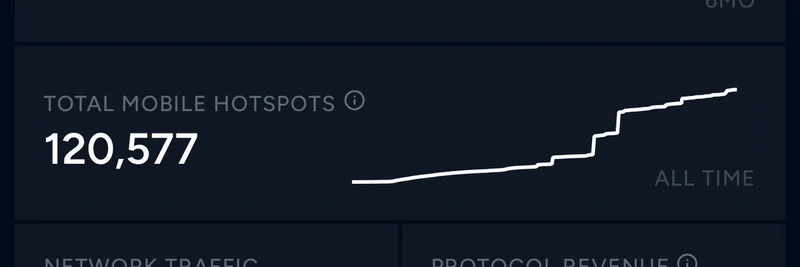Hey there, crypto enthusiasts! If you’ve been scrolling through X lately, you might have stumbled upon an intriguing conversation about Backpack Exchange and whether it’s truly "on-chain." The discussion kicked off with a tweet from Armani Ferrante on June 30, 2025, replying to Nick White’s bullish take on institutional rollups. Let’s break it down and explore what this means for the blockchain world—especially for those of us tracking meme tokens and cutting-edge tech!
What Sparked the Conversation?
The thread started with Nick White expressing excitement about institutions like Robinhood building rollups (Layer 2 solutions on Ethereum) and how this signals a bullish future for blockchain scaling. Armani jumped in with a fascinating reply: "Backpack is a deterministic state machine built off an authenticated linear log with an application-specific runtime. Sounds pretty on-chain to me." This got people curious—especially since Nick initially thought Backpack was a centralized exchange (CEX). So, is Backpack on-chain or not? Let’s dig into the details.
What Does "On-Chain" Even Mean?
Before we dive deeper, let’s clarify what "on-chain" means. In the crypto world, an on-chain system is one where all transactions and data are recorded on a public blockchain, accessible to anyone running a node. This contrasts with off-chain or centralized systems (like traditional banks) where data is private and controlled by a single entity. Backpack’s description as a "deterministic state machine" hints at blockchain-like behavior, so let’s unpack that.
A state machine, in simple terms, is like a vending machine: it starts in one state (e.g., full of snacks) and changes state (e.g., dispensing a snack) based on specific inputs (e.g., you inserting coins). In blockchain, this concept applies to how the network tracks balances, smart contracts, and data. A deterministic state machine means the outcome is predictable—every node running the blockchain will agree on the same state after a transaction. This is a core feature of decentralized systems like Ethereum or Solana.
Backpack’s Tech Breakdown
Armani’s tweet suggests Backpack uses an authenticated linear log and an application-specific runtime. Here’s what that might mean:
- Authenticated Linear Log: This could refer to a tamper-proof record of all transactions, similar to how blockchains log data. It ensures every step can be verified, which aligns with on-chain principles.
- Application-Specific Runtime: This implies Backpack has a custom environment tailored for its exchange functions, possibly built on a blockchain like Solana (where Backpack is known to operate). This allows faster, specialized processing while still leveraging decentralized infrastructure.
In a follow-up, Armani clarified that Backpack is indeed a CEX—a centralized exchange—but with a twist. Unlike typical CEXs where you just trust the company with your funds, Backpack is exploring ways to make its operations more transparent. They’re working on releasing zero-knowledge proofs (zk proofs) and having auditors run read-only nodes to validate the ledger. This hybrid approach blends centralized control with blockchain-inspired transparency.
The On-Chain Debate: Yes, But With Caveats
So, is Backpack fully on-chain? Not quite. Here’s the scoop:
- On-Chain Elements: The use of a deterministic state machine and plans for zk proofs (which let you prove something without revealing the details—think of it as a privacy shield) suggest Backpack is borrowing heavily from blockchain tech. This could allow users to verify their balances without exposing sensitive data.
- Centralized Limits: As a CEX, Backpack controls the platform and can freeze funds (e.g., for OFAC compliance). It also keeps transaction data private, and running a node isn’t open to the public—key differences from fully decentralized systems.
Nick’s follow-up question about where transaction data is published and whether anyone can run a node highlights these trade-offs. Armani’s response indicates Backpack prioritizes user privacy (no public balances) and compliance, which are valid concerns for a CEX. The zk proofs and auditor nodes could bridge the gap, but until those are fully implemented, Backpack sits in a gray area—partially on-chain, partially centralized.
Why This Matters for Meme Tokens and Beyond
If you’re into meme tokens or DeFi, this conversation is a big deal. Rollups and on-chain tech are driving the next wave of scalability, letting projects handle more transactions cheaply and quickly. Backpack’s hybrid model could inspire other exchanges to adopt similar tech, blending the speed of centralized systems with the trust of decentralization. For meme token traders, this might mean faster trades and more secure platforms—especially if zk proofs roll out smoothly.
Plus, with big players like Robinhood and Coinbase building Layer 2s (as noted in the original thread), the blockchain space is heating up. Backpack’s approach could set a precedent for how centralized platforms evolve in this ecosystem.
What’s Next for Backpack?
Armani mentioned they’re working on zk proofs and auditor nodes, which could make Backpack’s ledger more verifiable. Keep an eye on their official site for updates. If they pull this off, it might redefine what we expect from CEXs—bringing them closer to the decentralized dream while meeting real-world regulations.
Final Thoughts
The Backpack Exchange debate shows how blurry the lines between centralized and decentralized finance are getting. It’s not black-and-white—more like a colorful meme token rainbow! Whether you’re a blockchain newbie or a seasoned practitioner, this thread offers a glimpse into the future of crypto infrastructure. What do you think—will Backpack’s zk proofs make it truly on-chain? Drop your thoughts in the comments, and stay tuned to Meme Insider for more blockchain insights!



